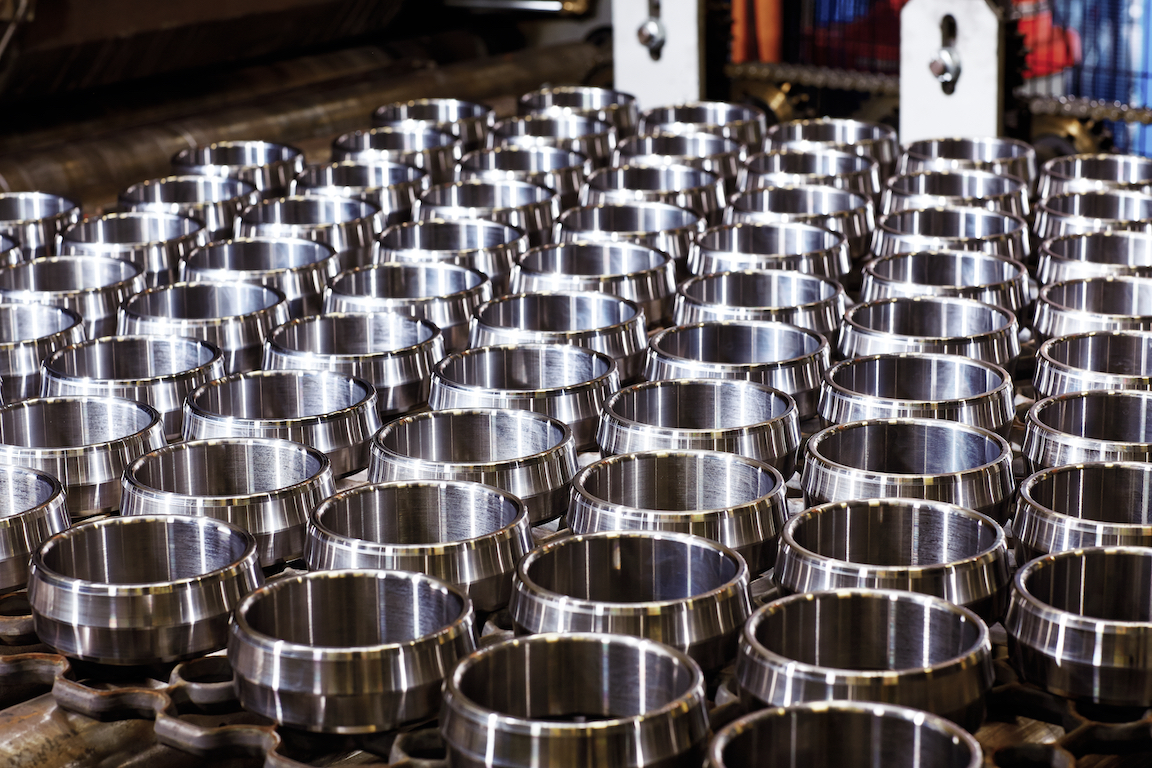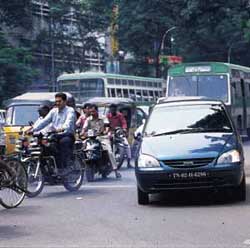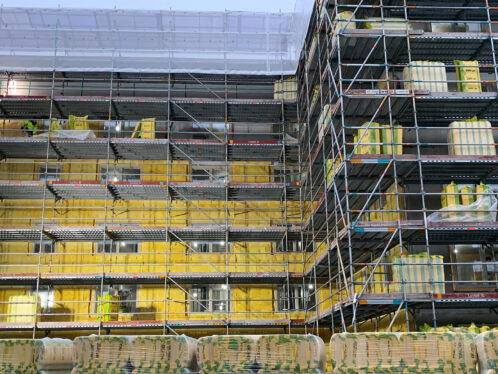
India’s own, on the road
A car made exclusively in India has captured the hearts of motorists from Mumbai to Calcutta. Offering high quality at an affordable price, the Indica is now ready for export to Europe.
Summary
Home-produced quality
From bearings to machining, Telco’s Indica cars are made almost entirely in India. SKF Bearings India supplies 80 percent of integrated wheel bearing units (Hub Bearing Unit 1 BAH-0052) for the car’s front wheels. The company also supplies taper roller bearings (30205, 30204 and LM 48548/10) at a 50 percent market share.
SKF operates its own factory in Pune, near the Indica factory, and recently added a new line to manufacture hub units for Telco. SKF India also is exploring the possibility of manufacturing hub units in India for export.
“In terms of product requirements, our customers in India are the same as our customers in Europe or worldwide,” says Torsten Nordgren, head of SKF India.
Tata Enterprises
With 255,000 employees and an annual turnover of USD 8.5 billion, Mumbai-based Tata Enterprises is India’s largest industrial conglomerate with more than 80 subsidiaries and affiliates. The group’s biggest businesses have traditionally been steel and vehicles (70 percent of India’s trucks and buses bear the Tata logo), through Tata Iron and Steel Co and Tata Engineering and Locomotive Co (Telco).
The group’s other activities include chemicals, pharmaceuticals, banking, information technology, hotels, power and construction. This year, Tata Tea bought a controlling interest in UK tea processor Tetley, in what was India’s largest foreign takeover to date.
A car made exclusively in India has captured the hearts of motorists from Mumbai to Calcutta. Offering high quality at an affordable price, the Indica is now ready for export to Europe.
After only two years in production, more than 55,000 Indian-made Tata Indicas are redefining the way Indians drive.
“We started the Indica project with a commitment to develop a car for the Indian market that could be measured against the world’s best in terms of features, looks and performance, and yet offer great value – a car designed for India rather than adapted to India. Today that vision is becoming a reality,” said Ratan Tata, head of India’s Tata Enterprises, during Indica’s debut party in Mumbai on Dec. 30, 1998.
A subcompact five-door hatchback the size of a Peugeot 206, the Tata Indica has already won an 8.2 percent share of India’s total passenger car market, and a 19 percent share of the market for cars in its class. The Indica (short for India’s Car) was styled in association with the Italian design firm IDEA. The engine was designed in association with Le Moteur Moderne of France and Tata. The rest, from bearings to machining, was done in India.
A dream fulfilled
Aggressive print and TV marketing in India have created an emotional bond between the car and consumers, just as western car advertisements do. When launched, the Indica was first marketed through its physical attributes – 1.4-litre engine, spacious interior, A/C etc. Today, the “More car per car” slogan has been replaced by “More dreams per car.”
A sample advert: a red Indica is flagged down by a damsel in distress. The male driver lapses into a daydream in which the girl enters the car. The encounter blossoms into romance, followed by marriage, followed by kids in the backseat singing with grandma. The driver exits his reverie and sees the girl waiting for a yes or no answer to her request for a ride. In the next shot, the car drives off without disclosing whether the girl is inside or left behind, leaving the viewer to wonder. The commercial signs off with the slogan “More dreams per car.”
This male-oriented marketing strategy has paid off, as more men buy cars in India than women. The car also has been well received by automotive journalists, and the Indica already has a loyal following in India.
“This is the first time that an Indian company has made a car that can compete with the best in the world. Hats off to the Indica team. Indica makes me feel proud of India and being an Indian,” says Raj Bhatia from New Delhi in a letter to the company.
In addition, the Indica won the prestigious Indigenous Technology award in May 2000 from India’s Human Resource Development Ministry.
Exceeding expectations
The Indica is manufactured in Pune from 98 percent Indian-made components in a new factory built at a cost of 500 million US dollars, and is sold through only 57 dealerships throughout India. The factory’s annual capacity will be 150,000 units. For the Tata group, the Indica fulfils a vision of making a world-class Indian car.
“We’ve had an overwhelming response,” says S. Chakrobarty Sr, deputy general manager of the Tata Engineering & Locomotive Co (Telco). Telco produces heavy, medium and light commercial vehicles, utility vehicles and passenger cars.
“After only a few days on the market, customer orders from around India exceeded 100,000 cars and we had to close the bookings,” he says. “In the first year alone, we sold 56,000 cars, which means that this country can absorb new entrants. We are not growing at the expense of others. This shows the kind of market we have.”
According to a 1999 report by the Society of Indian Automobile Manufacturers, the auto industry could quadruple in size and contribute up to 10 percent of India’s total industrial production by 2010.
Foreign car manufacturers have long had their sights set on India. With a population of 1 billion people, a rapidly growing middle class and – since the 1950s – only one major car manufacturer (Hindustan Motors Ltd, maker of the Ambassador), the market has been ripe for plucking.
Tough competition
Today, competition is fierce. Ford, Fiat, Hyundai, Peugeot, Honda, Daewoo, General Motors, Maruti (jointly owned by the government and Suzuki) and others have built greenfield manufacturing plants to satisfy India’s demand for modern automobiles. India sells some of the lowest-priced cars in the world, and the arrival of the Indica has sparked a fully-fledged price war between manufacturers.
Depending on model and accessories, the peppy 1,400 cc Indica is priced between 318,000 and 400,000 rupees (USD 7,100 to 8,900).
In May 2000 Telco rolled out the Euro II-compliant Indica 2000, which conforms to European emissions regulations. Equipped with a 16-bit microprocessor-controlled engine management system, a five-speed transmission and a multi-point fuel-injection system, the car has sold well in India and has been test-marketed in Malta, where it sold 500 diesel versions. Plans are in the works to export the Indica 2000 to Portugal, Spain, Italy and Britain.
Alexander Farnsworth
a feature writer based in Stockholm
photo D. Krishnan





